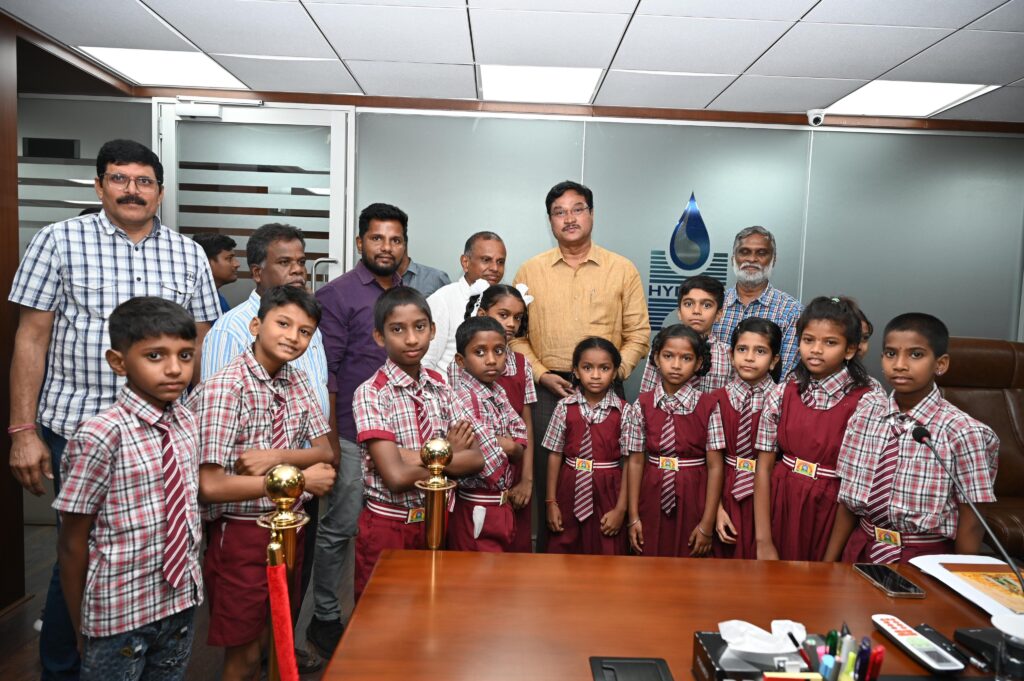A Silent Revolution Rises from Hyderabad’s Waters
A quiet revolution is unfolding in Hyderabad. A city once overwhelmed by floods after the slightest rain is now embracing transformation with strength, clarity, and community spirit. Drains are flowing. Lakes are breathing. Encroachments are falling. And a new Hyderabad is rising — thanks to HYDRAA.
The city’s innovative flood management and lake restoration initiative, HYDRAA, is doing more than cleaning water and breaking walls. It’s restoring the soul of the city.
The Transformation on Ground!
There was a time when Hyderabad, like many megacities, feared the rain. Monsoon meant clogged drains, knee-deep water, vanishing roads, and sleepless nights. But now? Even torrential downpours pass peacefully. Thanks to meticulously constructed drains and the proactive HYDRAA teams, water vanishes by morning — no chaos, no headlines. Where once lifeless lakes lay buried under debris and illegal construction, water now glistens again. Narrowed nalas are flowing wide. Stagnant pools are full of life. The city is reclaiming its lost blue heritage.
From Begumpet Nala to Batukamma Kunta, from Kukatpally’s Nallacheruvu to the hidden jewels of Old City like Bamruk Nuddowla, and charlapally, each water body tells the same story — rebirth. Government parks like Rukmini Estates in Jeedimetla and Reddy Enclave, once threatened by encroachment, are now safe havens of greenery and space. Children from schools like Doodhbowli Sarkari Badi can now walk past clean water bodies instead of sewage swamps.

One Man. One Mission. One Movement.
At the helm of this remarkable movement is Commissioner A.V. Ranganath, IPS. Appointed by Chief Minister Revanth Reddy, his no-compromise approach has inspired trust and action. When HYDRAA arrives, it doesn’t ask questions. It acts. Whether the encroachment belongs to a politician, a powerful builder, or a private individual — if it’s illegal, it’s coming down. And with each demolition, the city stands taller.
Why This Matters Beyond Hyderabad!
This isn’t just Hyderabad’s story — it’s a global lesson in urban resilience. Across the world, cities are battling the deadly trio of: Vanishing wetlands and lakes, Uncontrolled urban sprawl, and Climate-induced extreme rainfall.
According to the World Bank, urban flooding affects over 1.7 billion people globally. Over 35% of wetlands have disappeared since 1970 (UN Ramsar report). And India alone loses ₹25,000 crore (\$3 billion) annually to floods.
HYDRAA’s success is rare. Cities like Jakarta, Chennai, Bengaluru, and even New York are still struggling to restore their water systems. But Hyderabad has shown that vision, political will, and community support can rewrite the story.
Just like Netherlands created “Room for the River”, Hyderabad is making room for its lakes. Like Singapore made drains into lifestyle spaces, Hyderabad is making lakes into living heritage.

From Reaction to Preparedness
HYDRAA isn’t only reacting — it’s preparing. With over 4,100 trained personnel across 150 emergency monsoon teams and 368 static flood response points, the city is equipped like never before.
And now, HYDRAA is going high-tech. A new working group with IMD, NRSC, TSDPS, IIT Hyderabad, and other expert agencies will provide accurate rainfall predictions and real-time alerts, ensuring the city is always one step ahead.
Cleaning the Waters, Restoring the Future
HYDRAA has surveyed 549 lakes within the ORR (Outer Ring Road) limits. Over 411 lakes have received protection notices, and 138 lakes have been officially notified for revival. Using geo-tagging, pollution control, and STP enforcement, HYDRAA is cutting pollution at its roots.
Where real estate builders once boasted “lake views” while dumping untreated sewage into them — now, HYDRAA is watching. Sewage Treatment Plants (STPs) are no longer optional. Encroachments are being razed. And lakes are healing.
People Over Profit — Future Over Fear
There have been attempts to stop HYDRAA — political pressure, legal pushback, threats. But it continues to march forward — because the people are behind it. From street-side applause to social media gratitude, Hydra has become a movement, not a mission.

Today’s criticism will become tomorrow’s case study. And when the world looks for solutions to its urban crises, Hyderabad will shine — not for its skyscrapers, but for its lakes.
Bravo, HYDRAA. You’re not just restoring water — you’re restoring hope. Let this be a model for Jakarta, Mumbai, Lagos, and beyond. A city that remembers its past, protects its present, and builds for the future — that’s the Hyderabad the world needs to know.





